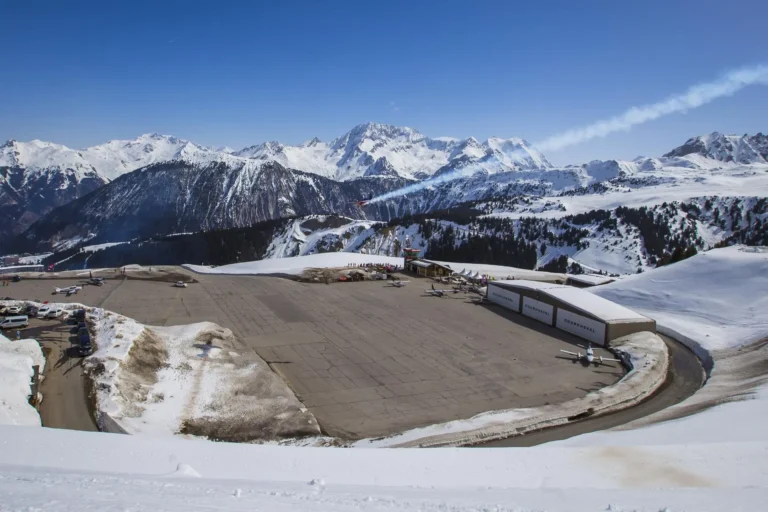Ever felt that rush of relief when your plane touches down smoothly? Well, prepare to have your gratitude levels skyrocket after learning about these aviation nail-biters. While most airports offer pilots the luxury of long, flat runways with clear approaches, these ten rebellious landing strips decided that was just too mainstream.
From beaches that double as runways to mountain landings, these airports have pilots white-knuckling their controls and passengers adding extra prayers to their pre-landing routines. Remember how your mom told you not to play on the cliff edge? These airports were built runways there and called it a day!
Determining which airports qualify as “most dangerous” involves analysing multiple risk factors rather than simply counting accident statistics. Many airports with challenging conditions have excellent safety records precisely because pilots and air traffic controllers exercise extreme caution when operating at these locations.
Below is a collection of 10 airports worldwide, presented randomly, that challenge even the most experienced pilots and demand exceptional flight preparation.
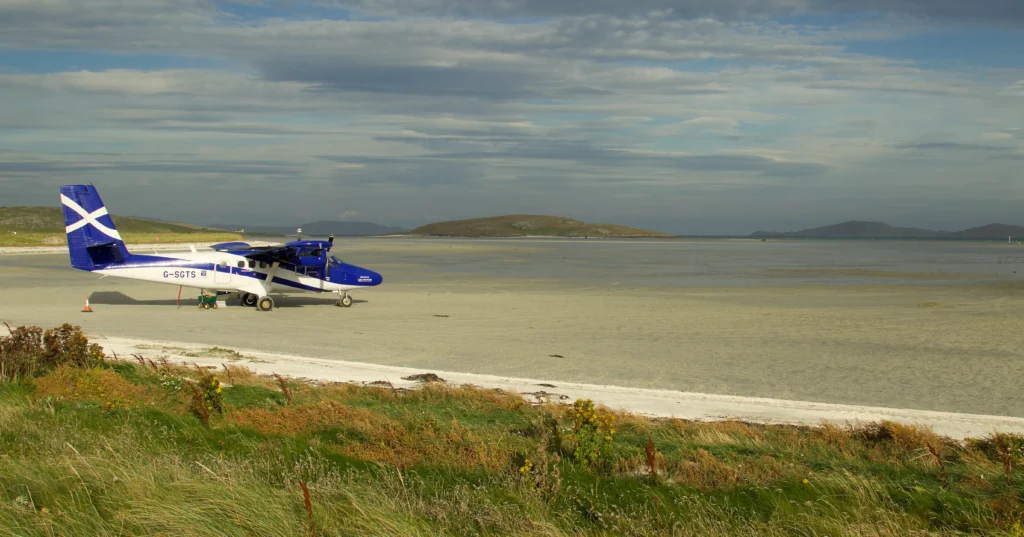
1. Barra International Airport, Outer Hebrides, Scotland
Barra International Airport (BRR) presents a truly unique aviation experience as the only commercial airport worldwide using a beach as its runway.
The airport’s 3 runways are completely submerged during high tide, meaning flight schedules must coordinate precisely with tidal patterns. This unusual arrangement creates a perpetually changing landing surface affected by weather, water conditions, and sand compaction.
The small aircraft that services this location adds another dimension to the experience. Loganair (LM), the primary carrier operating at Barra (BRR), limits passenger capacity to ensure sufficient fuel reserves since no refuelling facilities exist at the airport. Despite its unconventional setup, the airport maintains an impressive safety record through strict operational protocols and weather monitoring.
2. Tenzing-Hillary Airport, Lukla, Nepal
Originally constructed in 1964 under Sir Edmund Hillary’s supervision, Tenzing-Hillary Airport (LUA) serves as the primary gateway for adventurers heading to Mount Everest base camp. Its extreme elevation of 9,383 feet (2,860 meters) creates challenging conditions as lower air density requires pilots to maintain higher approach speeds compared to sea-level airports.
The airport’s extraordinarily short runway measures just 1,729 feet (527 meters) long—less than a third of a typical commercial airport runway. This abbreviated landing strip features a 12-degree upward slope designed to help aircraft decelerate quickly.
One runway end terminates at a mountain wall while the opposite end drops precipitously into a deep valley, leaving no margin for landing errors.
Only pilots with specialised high-altitude training and mountain flying certification can operate at this challenging location.
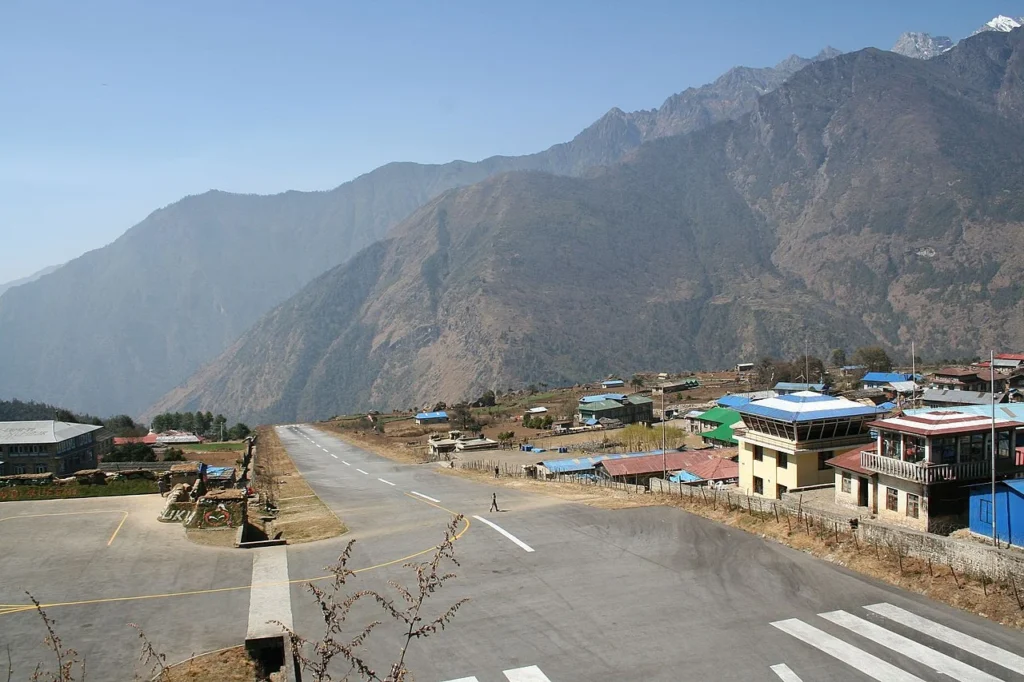
3. Toncontin International Airport, Tegucigalpa, Honduras
Toncontin International Airport (TGU) has earned its reputation as one of Central America’s most challenging aviation facilities.
The airport’s runway measures just 7,096 feet (2,163 meters)—considerably shorter than recommended for major commercial aircraft operations. This length constraint requires pilots to execute precise touchdown points while managing a rapid deceleration.
The surrounding mountainous terrain forces aircraft to approach at steeper angles than standard, with a complex final approach requiring a 45-degree turn shortly before touchdown to align with the runway. Strong, unpredictable wind patterns frequently create turbulence during this critical manoeuvre.
Following several incidents, including a fatal 2008 crash involving a TACA Airlines (TA) Airbus A320, authorities implemented significant safety improvements. These included extending the runway slightly and installing enhanced navigational aids. Despite these modifications, Toncontin (TGU) remains restricted to daytime operations with strict weather minimums.
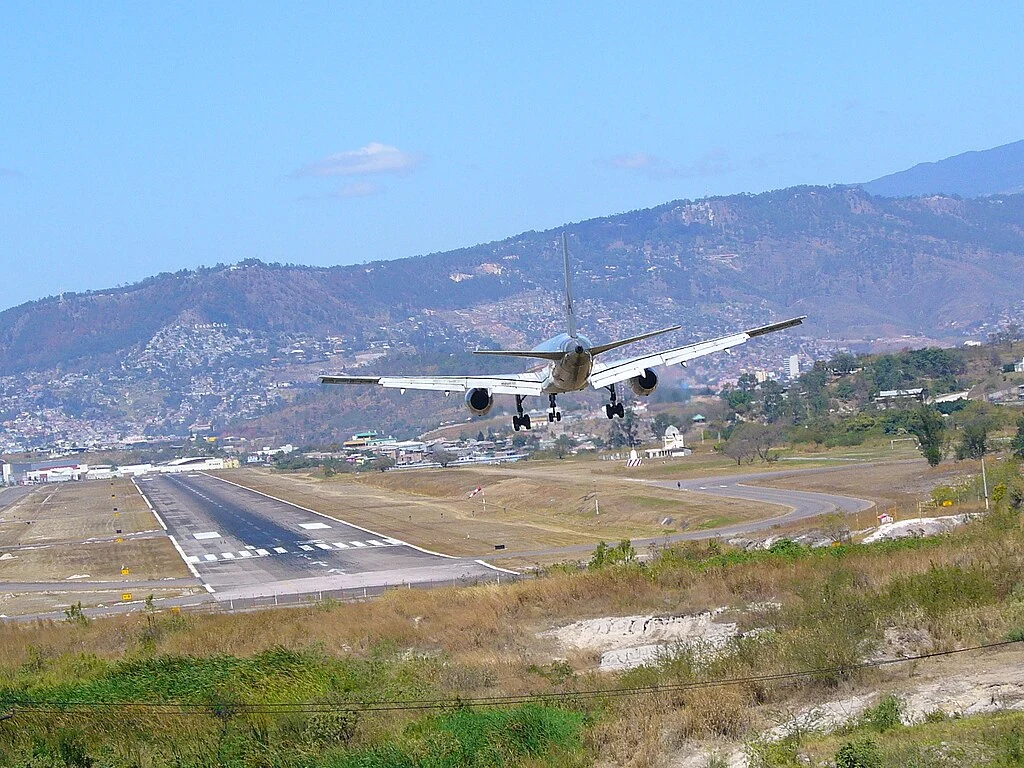
4. Princess Juliana International Airport, St. Maarten
Princess Juliana International Airport (SXM) on the Caribbean island of St. Maarten has become world-famous for its spectacular beach approaches.
Aircraft must fly extremely low over Maho Beach—a popular tourist destination—creating dramatic photographs and videos that have made this approach a social media sensation. Beach visitors experience powerful jet blast effects when aircraft depart, with warning signs alerting tourists about potential dangers.
The airport, which opened at its present location in 1964, features a relatively short runway measuring 7,546 feet (2,300 meters). This length presents challenges for larger aircraft, which must touch down precisely at the runway threshold to ensure sufficient stopping distance.
Despite the visual drama of these approaches, Princess Juliana maintains an excellent safety record with no recorded landing accidents according to the Aviation Safety Network.
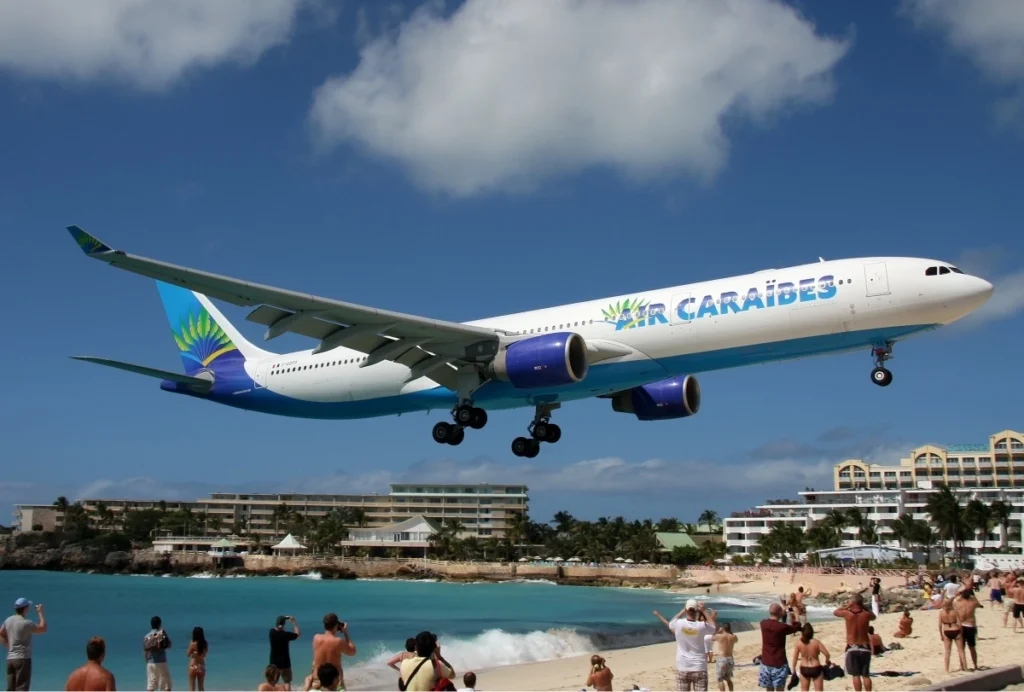
5. Kansai International Airport, Osaka, Japan
Kansai International Airport (KIX) represents a marvel of engineering innovation but faces ongoing geological challenges. Built entirely on an artificial island in Osaka Bay, this facility opened in 1994 as Japan’s first 24-hour international airport.
The primary concern surrounding Kansai involves “progressive subsidence”—the airport has sunk approximately 40 feet (12 meters) since its construction!
Engineers anticipated some settling of the massive structure but underestimated the extent of subsidence. Ongoing countermeasures include continuous pumping operations to manage water levels and structural adjustments to accommodate the changing elevation.
Despite a spokesperson’s 2001 reassurance that “there is no chance that this airport is ever going to sink under water,” monitoring and mitigation efforts continue.
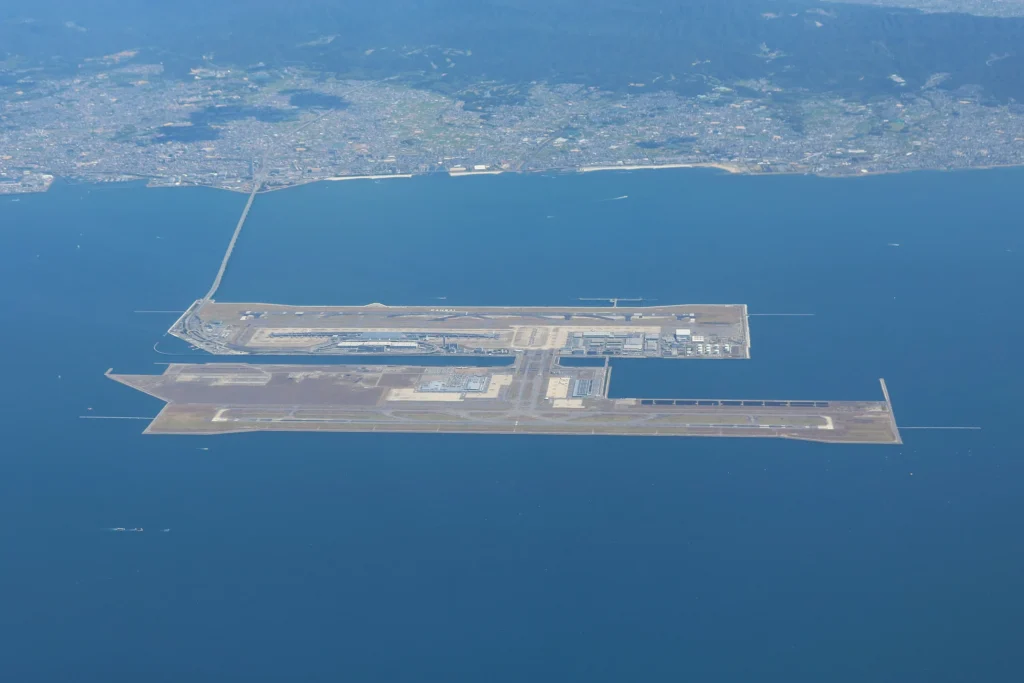
6. Courchevel Altiport, Courchevel, France
Nestled in the French Alps, Courchevel Altiport (CVF) serves the prestigious ski resort and represents one of Europe’s most technically demanding airports. The facility’s abbreviated runway extends just 1,762 feet (537 meters) and features an exceptionally steep 18.6 per cent uphill gradient designed to help aircraft decelerate rapidly upon landing. This extreme slope—approximately four times steeper than standard—creates visual illusions that challenge even experienced pilots.
Regulatory authorities impose strict qualification requirements for pilots operating at Courchevel (CVF). These include mandatory specialised mountain flying training, successful completion of a practical test administered by certified mountain flight instructors, and currency requirements mandating operations at the airport at least once every six months to maintain proficiency.
Adding to these challenges, the runway remains unlit, restricting operations to daylight hours with optimal visibility. Winter weather conditions frequently create additional complications with snow and ice management.
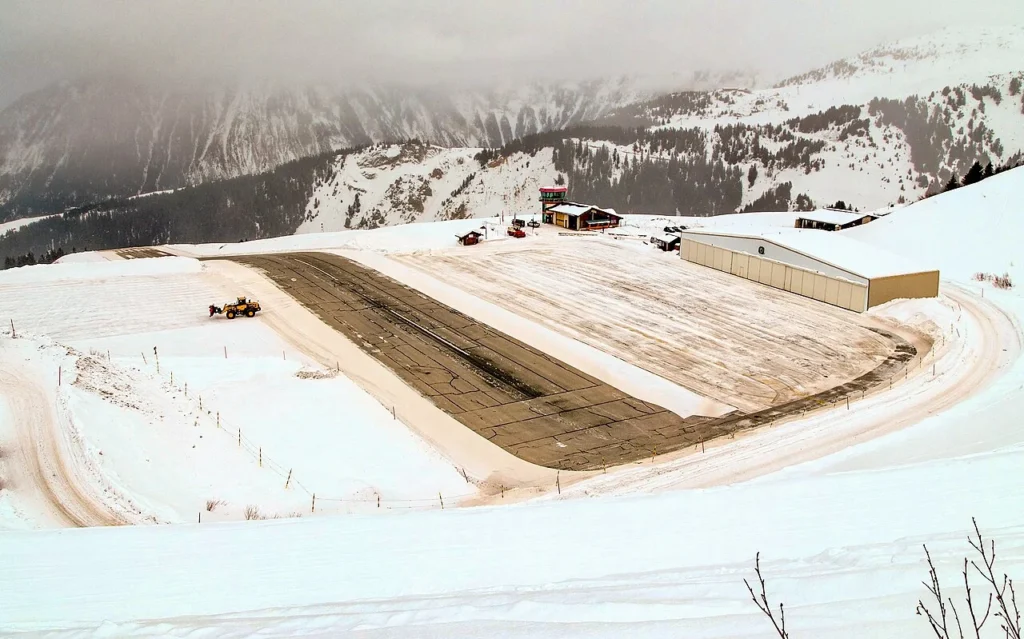
7. Kushok Bakula Rimpochee Airport, Leh, India
Located in the northern Indian region of Ladakh, Kushok Bakula Rimpochee Airport (IXL) presents significant high-altitude challenges. Situated at an elevation of 10,682 feet (3,256 meters) above sea level, this facility ranks among the world’s highest commercial airports. The thin air at this altitude affects aircraft performance dramatically, requiring modified takeoff and landing calculations.
Surrounded by towering Himalayan mountains, pilots must navigate precisely through narrow valleys during approach and departure. Severe afternoon winds regularly create dangerous turbulence, restricting operations to morning hours only. These conditions require pilots to receive specialised high-altitude training and certification before operating at this challenging location.
Despite these formidable conditions, the airport maintains a strong safety record. According to its Aviation Safety Network profile, no fatal accidents have occurred in the vicinity since 1979, when the facility operated as a military base.
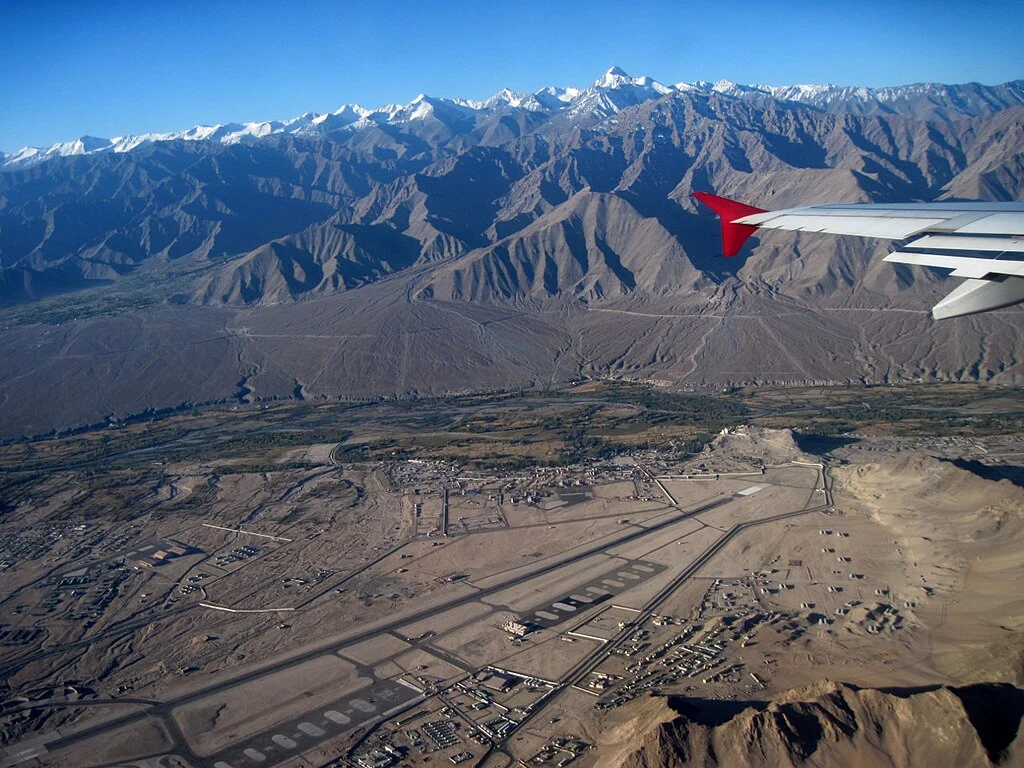
8. Paro International Airport, Paro, Bhutan
As Bhutan’s sole international airport, Paro (PBH) serves as the primary aviation gateway to this Himalayan kingdom. Situated at an elevation of 7,364 feet (2,244.5 meters) above sea level and surrounded by peaks reaching 18,000 feet (5,500 meters), the airport presents extraordinary navigational challenges. The complex approach requires pilots to weave between hillsides and manoeuvre over residential areas before executing a tight turning manoeuvre to align with the runway.
Operational restrictions at Paro (PBH) are among the most stringent worldwide. Landings occur only during daylight hours with optimal visibility conditions.
As of 2020, only approximately 20 pilots worldwide held certification to land at this challenging airport, highlighting the specialised skills required.
Despite these formidable conditions, neither the Aviation Safety Network nor the Bureau of Aircraft Incidents Archives records any accidents at this location.
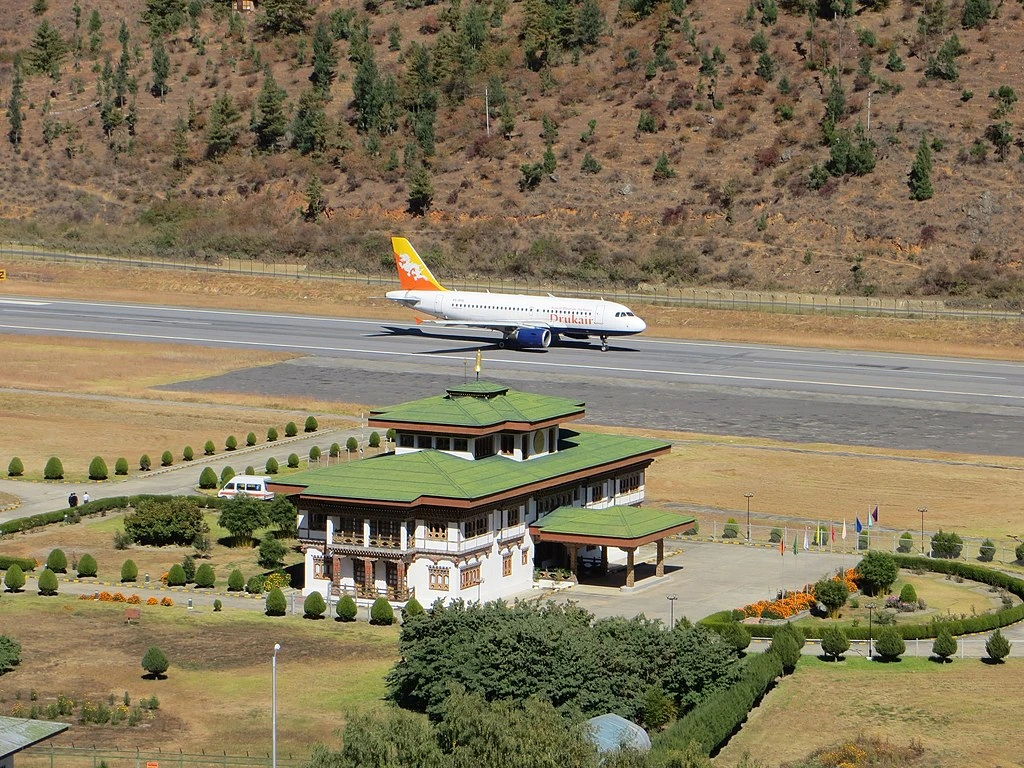
9. St. Helena Airport, St. Helena
This remote British island territory in the South Atlantic Ocean, St. Helena Airport (HLE), famous as Napoleon Bonaparte’s final place of exile, remained accessible only by sea until 2016, when its first airport was completed. The project encountered significant challenges when initial testing revealed dangerous wind shear conditions caused by the island’s rugged topography. These findings delayed the airport’s opening until 2017, when operational procedures were modified to address these conditions.
St. Helena’s 6,070-foot (1,850-meter) runway occupies a precarious position on a cliff-side plateau with significant drops to the ocean on multiple sides. Unpredictable crosswinds frequently create turbulence during the critical landing phase. These challenging conditions necessitate special pilot certification and training for operations at this isolated location.
Despite initial concerns, the airport has maintained a perfect safety record since opening, with no reported mishaps.
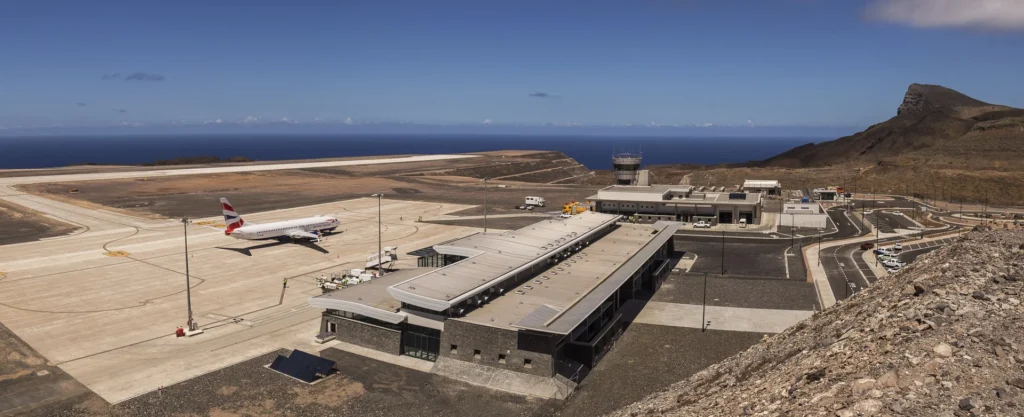
10. Juancho E. Yrausquin Airport, Saba
The Caribbean island of Saba, whose distinctive silhouette appeared in the original 1933 “King Kong” film, hosts what is widely recognised as the world’s shortest commercial runway. Measuring just 1,300 feet (400 meters) in length—less than one-quarter of a typical commercial runway—Juancho E. Yrausquin Airport (SAB) presents extraordinary landing challenges.
Both runway ends terminate in cliffs dropping directly into the Caribbean Sea, leaving no margin for error during landing or takeoff operations.
Only a select group of specially certified pilots receive authorisation to operate at this challenging location. Aircraft size restrictions limit operations to small propeller planes typically seating fewer than 20 passengers. Despite these intimidating conditions, the Aviation Safety Network records no accidents at this facility, testifying to the effectiveness of strict operational protocols.

Bottom Line
So there you have it—10 airports where pilots earn every penny of their salary, and passengers might consider packing a spare pair of underwear. While aviation safety statistics remain incredibly reassuring overall, these particular airports remind us that not all runways are created equal.
The next time you experience a bumpy landing at your local airport, just remember—at least your runway isn’t underwater twice a day, doesn’t require navigating between mountain peaks, and isn’t perched on the edge of a cliff with a drop that would make a mountain goat nervous.
For pilots who’ve mastered these challenging airports, your hometown’s occasional crosswind probably feels like parking in an empty lot. As for the rest of us? Maybe stick to the in-flight movies and leave the window shade down until that reassuring “thump” tells you you’ve safely arrived—preferably at a nice, boring airport with plenty of flat, lengthy runway to spare.
Stay tuned with us. Further, follow us on social media for the latest updates.
Join us on Telegram Group for the Latest Aviation Updates. Subsequently, follow us on Google News

